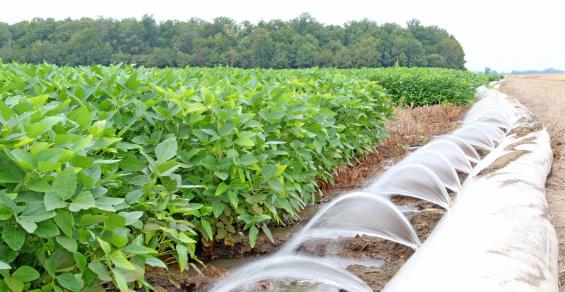Multiple attempts to implement irrigation systems finds success.
When Jackson County, Ark., producer Jennifer James first began using plastic irrigation tubing or polypipe to irrigate her corn and soybeans in 2004, she was surprised at the results.
James, a recognized conservation leader in the rice industry, hoped that switching from pulling levees in corn and soybeans to furrow irrigation with plastic pipe would produce water savings and reduce pumping costs.
But, speaking during a presentation to the virtual 24th annual Arkansas Soil and Water Education Conference, she said she was surprised at the reduced wear and tear on her farm’s tractors and employees that occurred, as well.
“After those first couple of years, we were looking at the hours on our tractors and the hours that our employees were putting in, and they had been reduced by 250 to 300 hours per person,” she said. “We were really shocked. Obviously, that’s savings, and it also helps your employees have a better summer when you’re able to schedule that irrigation and make it work.
“We were irrigating five or six times or more during the summer, and it just really helped not having the levees in our corn and soybeans. We also saw an increase in our corn and soybean yields strictly due to this new irrigation technique and less cost.”
When it comes to soil moisture sensors, surge valves, poly tubing, using Pipe Planner and other programs. James said she and her family feel they have “tried and failed and tried and succeeded” multiple times.
“I think it’s very important for all of us to continue to try and do better with our irrigation practices, to conserve water and become more efficient and also raise a great crop,” she said. “We need to continue to learn, to tweak those processes. What works for somebody else may not work for you.”
Trial and error was the way the James operation moved into furrow irrigation for corn and soybeans in the early 2000s.
“We bedded our fields, rolled out the pipe, punched holes along the furrows and just did the best we could,” she noted. “After we saw the savings in hours on our tractors and employees, we could see we needed to expand our ability to use furrow irrigation.”
That included precision-leveling more land to the point where they could use furrow irrigation and talking with landlords and working with them on projects to increase their number of acres that could be furrow irrigated.
“We wanted to improve their land so we could farm better and make more profit for them as well as ourselves,” she said. “We now are nearly 100% irrigated. All of our corn and soybeans are well irrigated, and we can see that that is helping to reduce our risk of drought in the summer, increase our efficiencies and our yields.”
James said those improvements included learning to use Delta Plastics’ Pipe Planner computerized software that helps farmers determine the size and placement of holes in plastic irrigation tubing.
“As we progressed in our understanding of furrow irrigation and to refine our process, we also learned to use the Pipe Planner program,” she said. “We began experimenting with different hole sizes, pipe diameters, surge valves, and even moisture sensors.”
To watch the presentation, visit www.arkswec,com and click on the 24th annual Arkansas Soil and Water Education Conference video.




